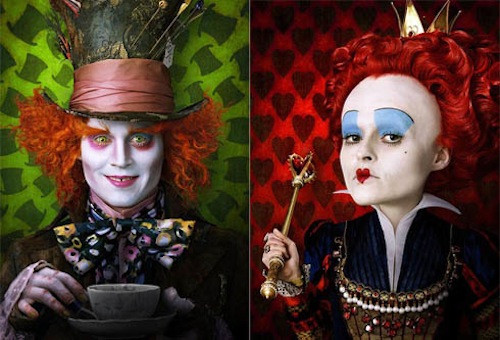SA’s big cinema chains, Nu Metro and Ster-Kinekor, have reported a surge in movie attendance over the past two years. Both chains have responded by investing aggressively in new screens countrywide as well as in outfitting existing complexes with the latest three-dimensional (3D) and digital projectors.
Ster-Kinekor, a subsidiary of Primedia, says that audience attendance is rising 10-15% a year. Avusa, the holding company for Nu Metro, reported that revenues at Nu Metro Cinemas soared 28% during the six months ended 30 September 2009.
The rosy numbers represent a dramatic turnaround in the fortunes of the competing cinema chains, which were bloodied by a messy price war between 2005 and 2007. At the peak of the price fight, movie ticket prices fell as low as R12, a level that neither chain could sustain, especially with ad revenues coming under severe pressure.
Between them, Nu Metro and Ster-Kinekor shut down dozens of screens around the country in the aftermath and ticket prices started to rise to their previous levels. But a march towards new technologies, such as 3D and digital, coupled with a slate of strong films over the past two years, are now bringing about a revival of SA’s cinemas.
Cinemas have performed well against the backdrop of a global recession, says Ster-Kinekor group marketing executive, Michael Bender (pictured above). Though they hit a growth ceiling a few years ago, they are benefitting from a trend that sees South Africans look to secure environments such as shopping centres for entertainment, rather than nightclubs and pubs, he adds.
The single biggest reason South Africans are going back to cinemas lies in the strength of the content that has come out over the past two years, says Bender. Big blockbusters such as Iron Man (2008) and Transformers: Revenge of the Fallen (2009) performed predictably well, as have tween-focused flicks like the Twilight franchise.
SA-themed international productions such as District 9 and Invictus, and homegrown movies, Jerusalema and White Wedding, have also proven popular among cinema audiences.
Alternative content — for example, major international ballet, theatre and opera productions filmed live for cinema exhibition — has expanded the appeal of the cinema to new markets.
Advertising revenues, too, are on the up, says Bender. One reason for this is the additional flexibility that digital projectors give cinemas and advertisers. Digital projection allows ads to be added or removed on the fly, whereas ads need to be manually spliced into 35mm film reels.
Revenue growth has encouraged SA cinema chains to start investing heavily in their cinemas again. Just in recent months, Nu-Metro has opened multimillion-rand developments at The Galleria in Amanzimtoti and at the Emperors Palace casino complex near OR Tambo International airport.
The six-screen multiplex at the Emporium at Emperors Palace is Africa’s first all-digital cinema complex, featuring Barco 2K digital projectors and 3D cinemas. Ster-Kinekor recently refurbished its Centurion City cinema.
Marching to digital
The march towards digital is also moving apace. Ster-Kinekor has so far converted just over 100 of its 600 screens nationwide to digital — a process that started back in 2006. Of these, 13 are compliant with the Digital Cinema Initiatives (DCI) standards — an architecture that the studios created in an effort to stamp out piracy and control picture and sound quality.
“Eventually, all our screens will be digital. But there is a lot to be done before we can commit to a timeline for the migration to be completed,” says Bender.
But the most significant trend for SA cinemas is the move to 3D. The studios and cinemas are pumping so much money into the technology that it will form a big part of cinema’s future. “3D is the best thing that ever happened to us,” Bender says. “It is the new cinema. It’s an immersive and engaging medium that reaches out and grabs you.”
Movie studios and cinema chains love 3D because it allows them to offer a product that pirates cannot compete with and one that their customers cannot yet easily replicate in their homes. The studios have also been pushing 3D in a bid to speed up worldwide migration to digital projectors.
Ster-Kinekor launched SA’s first 3D cinemas at The Zone and Sandton City in Johannesburg, Cavendish Square in Cape Town, Brooklyn in Pretoria and the Gateway shopping centre in Durban in 2007. Since then, 3D screens have proliferated countrywide — Nu Metro operates 14 and Ster-Kinekor has 13, a number it plans to double in the next few years.
3D animated features such as Coraline, Up and Monsters vs Aliens have performed well enough to prove that the technology has a viable future. Now, the challenge for the movie industry is to convince audiences that the technology is a good fit for mainstream blockbusters, too, and to keep them interested once the novelty wears off.
Hollywood’s biggest bet on 3D to date — James Cameron’s Avatar — has turned out to be a resounding success in SA and the rest of the world. Early last week, Avatar distributor, 20th Century Fox, confirmed that that the film had sunk the box office revenue record set by Titanic (also directed by Cameron).
Avatar has earned more than $1,86bn worldwide, compared to Titanic’s box office revenues of $1,84bn. The numbers are impressive, even if 11 years of inflation and the higher prices of 3D tickets gave Avatar an edge over Titanic.
Sinking the Titanic
Avatar has pulled in box office receipts of more than R41m in SA, placing it ahead of Titanic as the country’s highest grossing film of all time. Titanic achieved gross takings of R40m.
The film’s strong box office performance is likely to open the flood gates for blockbuster action-adventures in 3D — there’s already talk that the next James Bond and Harry Potter movies will be filmed in 3D. “Imagine seeing the next Iron Man or Transformers in 3D,” Bender says.
3D isn’t without its drawbacks, the most significant of which is the sheer cost involved in upgrading cinemas to the expensive 4K digital projectors needed to render 3D visuals. It costs about R1m to convert a cinema for 3D projection. But cinemas and movie studios alike seem determined to ensure that the technology succeeds.
A number of big 3D productions will reach SA screens this year — notable examples include Toy Story 3 and Tim Burton’s Alice in Wonderland reimagining. Ster-Kinekor has also started to work with its major advertisers to bring 3D adverts to its cinemas in the near future.

Despite improved revenues and audience attendance, SA cinemas still face many challenges: currency fluctuations, competition from home entertainment and a near-saturated addressable market.
The stiffest competition that Ster-Kinekor and Nu Metro cinemas face is not each other, but affordable home theatres and big-screen high-definition televisions. After the bitter experience of 2005, both seem unwilling to compete too aggressively on price.
“We will never get into a price war again,” says Bender. A former ad agency exec who previously spearhead the marketing of the PlayStation 3 for Ster Kinekor’s gaming division, Bender talks instead about providing a “360-degree experience” to customers.
That marketing buzz-phrase refers to the investments that Ster-Kinekor is making in turning its cinemas into social venues that stage big events and double as a place to hang out as well as to simply see a film. A 2am launch event for the Michael Jackson film This Is It, which had a satellite link to the Los Angeles premiere, and early screenings of District 9 with the cast and crew in attendance were popular in 2009.
“We’re bringing a bit of the red-carpet feel to SA — something we’ve never really had here before,” Bender says. Self-service kiosks in most cinemas have helped minimise ticket queues; Ster-Kinekor is now looking ways to make confectionary queues also move more quickly. The lobby of the cinema should be a place to relax rather than queue, Bender says.
The experience begins before the customer even enters the cinema, says Elizabeth Lee Ming, customer relationship management marketing manager at Ster-Kinekor Theatres. The company has a giant database of movie club members that it markets films to across a range of channels, including e-mail, MMS and SMS.
Users can log onto the Ster-Kinekor website to create profiles based on their interests and define the type and medium of communications they would like to receive. Below-the-line campaigns using SMS and the Web have helped to drive and sustain interest in films such as The Twilight Saga: New Moon. — Lance Harris, TechCentral
- Subscribe to our free daily newsletter
- Follow us on Twitter or on Facebook




